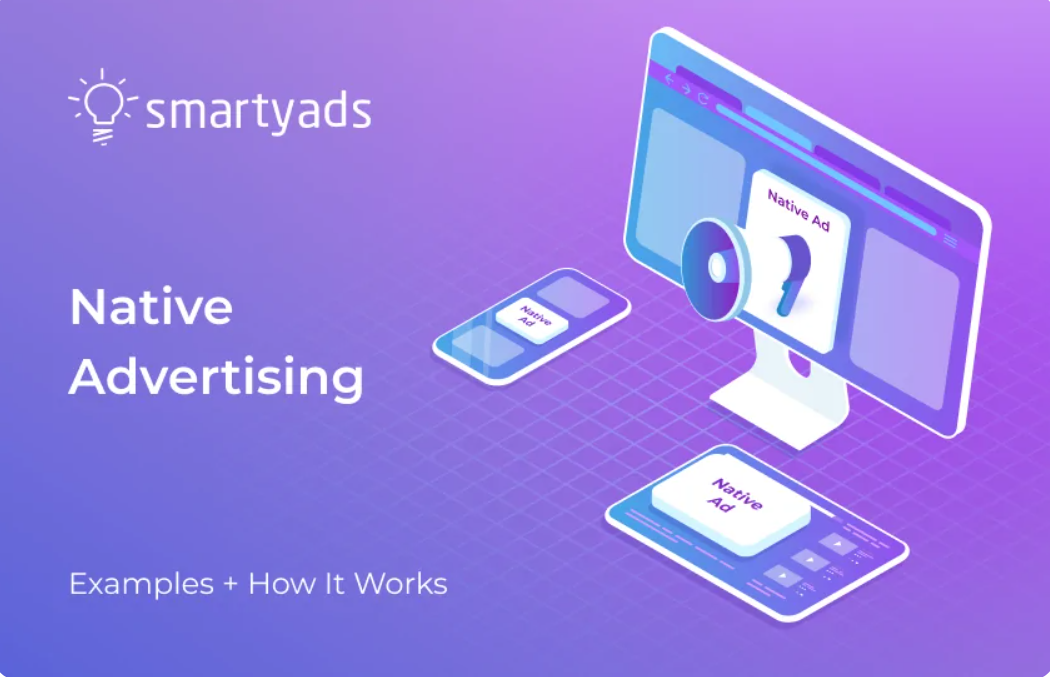Around the world, advertisers choose native advertising as one of the surest ways to reach their target audience.
Native ad trends are going up at the speed of light. Ad formats that barely look like the actual ads and drive incredible user engagement are on the verge of glory today.
Best native advertising examples are still valuable and unintrusive. They adapt to the format and characteristics of the website or app and weave organically into the context of the article, game, or whatever content they find themselves in.
Do you want to find the perfect native advertising example for your campaign? Let's try to do it together.
What is Native Advertising?
The most common definition of native advertising is a form of paid media in which the ads fit the look, feel, and function of the media format where they are placed.
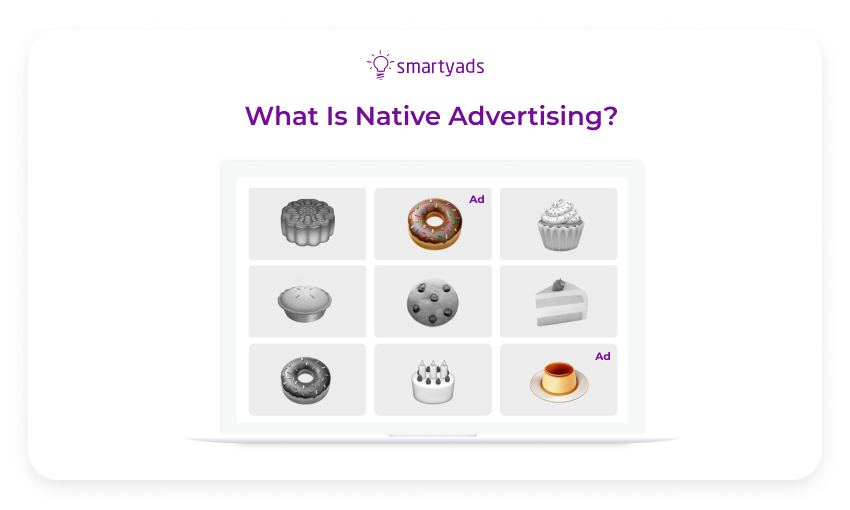
Nowadays, recommended paid content in website widgets, social media posts, news feeds, and even banners has taught how to mimic publisher content's form and function.
That's why, unlike other kinds of ads, native advertising is not intrusive for users, so it doesn't cause immunity or blindness as banners do.
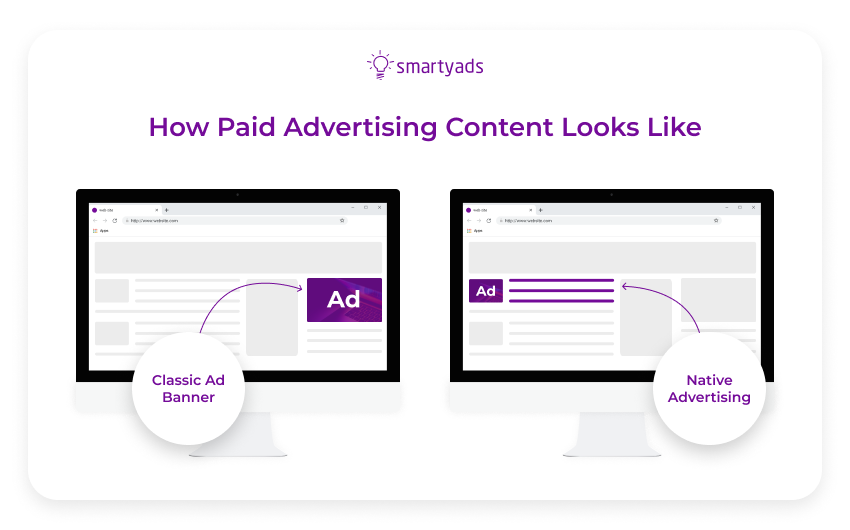
Features and Characteristics
Examples of digital native ads can include in-feed units on the website. Plus, native ads can also be disguised as editorial articles, "you may also like" posts on social media, or videos on YouTube.
You can always spot digital advertising content by the following signature characteristics:
- In contextual advertising, such ad formats are typically placed on niche websites to reach the target audience;
- According to the FTC (Federal Trade Commission), it is obligatory for native advertising to be appropriately marked to notify the users about the commercial origin of the material;
- Native content always echoes the editorial content of the site;
- Native advertising engages the audience and offers valuable user information that harmoniously complements the resource's overall content, looks, and feels;
- The content always comes first, not the product.
The promotional part shouldn't be obvious; that's why natives typically don't have calls to action.
A Long Story: from 1885 until 2023
It sounds impressive, but native ads have been around for almost a century:
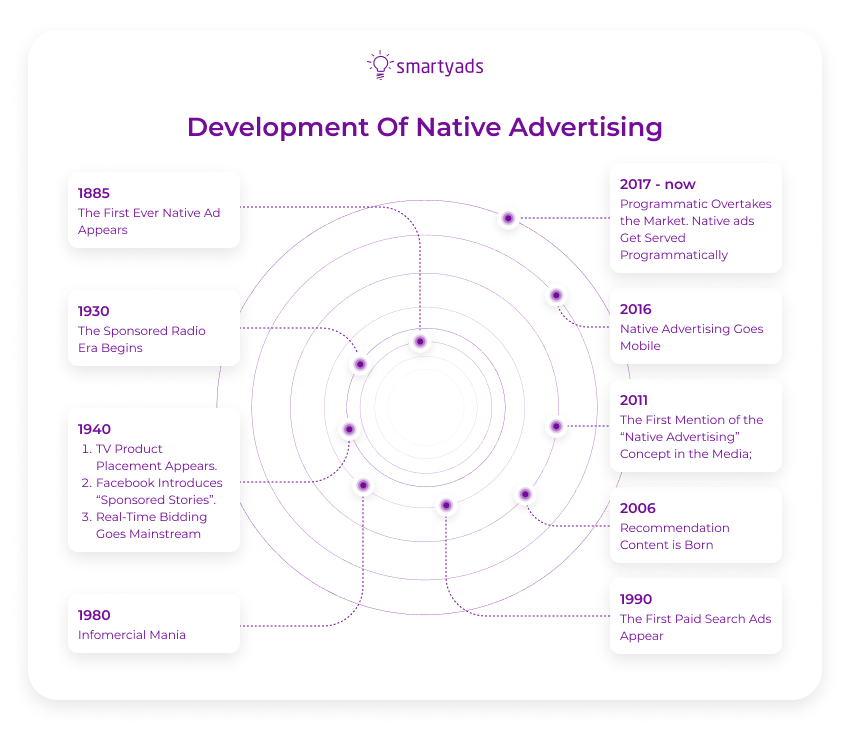
Native ads took time to become genuinely effective. For decades, different companies have used native advertising, experimented, and learned, sometimes surprising the audience with exciting new promotions.
By 2023, programmatic display digital advertising expenditures are expected to increase to nearly $142 billion.
According to eMarketer stats, native ad spending in the US will reach $98.59 billion. Video native advertising spending will hit $30.88 billion in 2023.
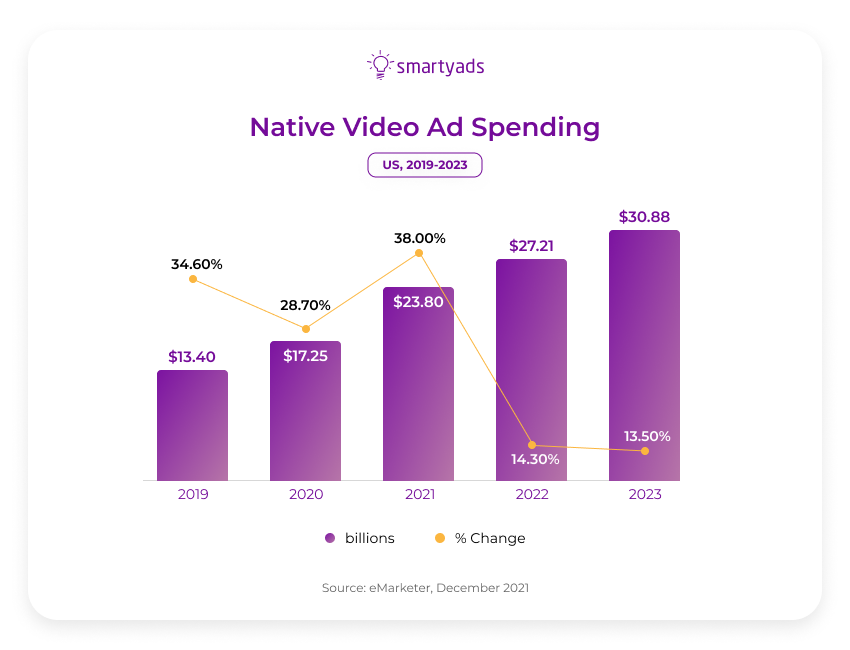
While everything remains pretty much the same in formats, a significant shift can be noticed in the ad purchasing methods.
The share of natives placed on social media is slightly declining, while the share of ads purchased programmatically is constantly increasing.
How Native Advertising Works?
Want to see native display ads example that generates high CPM? Most formats, e.g., content recommendation widgets, social media ads, and news feeds, can produce a high CTR.
Still, engaging online advertising creatives will play a significant role since native promotion is delicate and works hand-in-hand with good content.
5 Stats that prove the success of native ads:
- People watch natives 53% more often than banners. You can find out why here;
- This format produced $58,608 in attributable revenue for Magoosh Online Test;
- Native ads that contain rich media can elevate conversion to 60%;
- 32% of people who watched native ads are willing to share them with others (in contrast to only 19% of 'sharers' who watched banner ads);
- Native content can drive 40 times higher CTR than other formats;
- Native ads show the highest click-through rates (1%) in categories like pets, food, drink, family, travel, and technology.
Creating Ads: Digital Implementation
Programmatic native ad examples featured above can serve as a basis for crafting your own digital marketing strategy. Sizes and resolutions of native advertising formats are almost limitless, and the performance rates of these ads are among the highest across the industry.
For the advertiser who strives to create an efficient native advertising campaign, it is important to evaluate a bunch of native ad placement aspects beforehand:
- Form: How exactly the native ad will fit the website's design? Where are the viewers active the most, in-stream or out-stream?
- Function/Integration: Is the native ad able to function the same way as the other website elements on the page where it is placed?
- Targeting/Buying: Where do you plan to place the ad: is there a specially designated section on the website you plan to target? If so, how do you plan to target such?
- Measuring results: Since the performance of native advertising is measurable, how do you plan to derive analytics? Which indicators will you apply?
Let's look at the effective native ads examples perfect for the best native platforms in 2023.
Best Native Ad Formats in 2023
Native advertising falls into six categories according to the IAB classification, but exactly in-feed ads, recommended, sponsored posts, and search units are among those formats that keep the attention of advertisers in 2023:
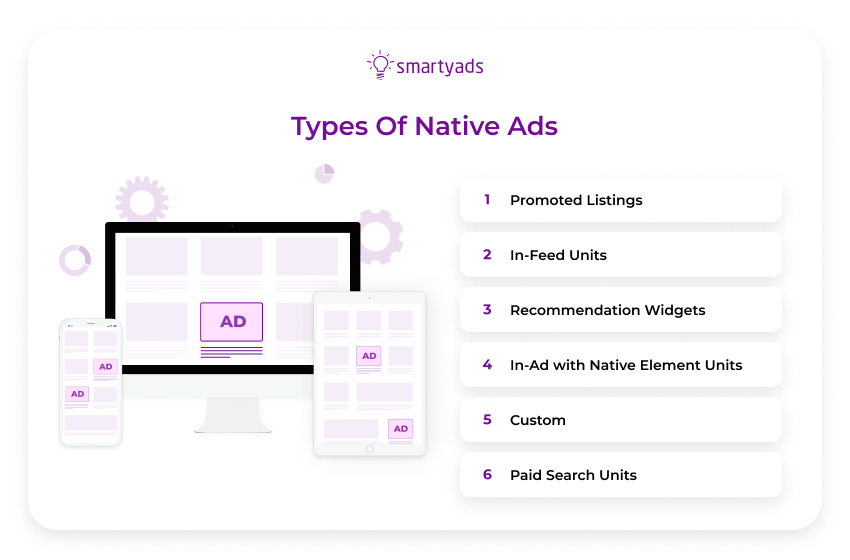
If you look at the best native advertising examples in 2023, you can notice that these units still deliver helpful content for readers.
These days, people are loyal to such materials as long as they can be helpful: as the stats above illustrate, users are ready to read, share, and repost the content even when they find out it is sponsored.
Content Recommendation Blocks
You can find a native campaign example featuring recommended content almost on any site. Such an ad unit works as a recommendation block "Read also", "Another video", or "Interesting publications".
The never-ending advertisers' journey to higher brand awareness is what causes marketers to experiment with digital ad formats continually. A native ad is a format that helps to achieve better effectiveness through obviously lesser brand exposure.
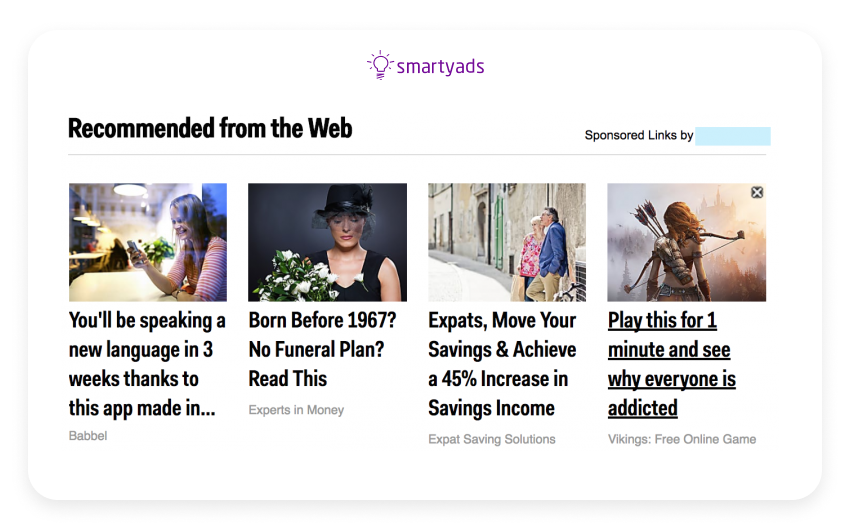
"Recommended" native advertising is very beneficial because it allows advertisers to pay for the click/visit and expect an ad to be shared through various resources.
How it works:
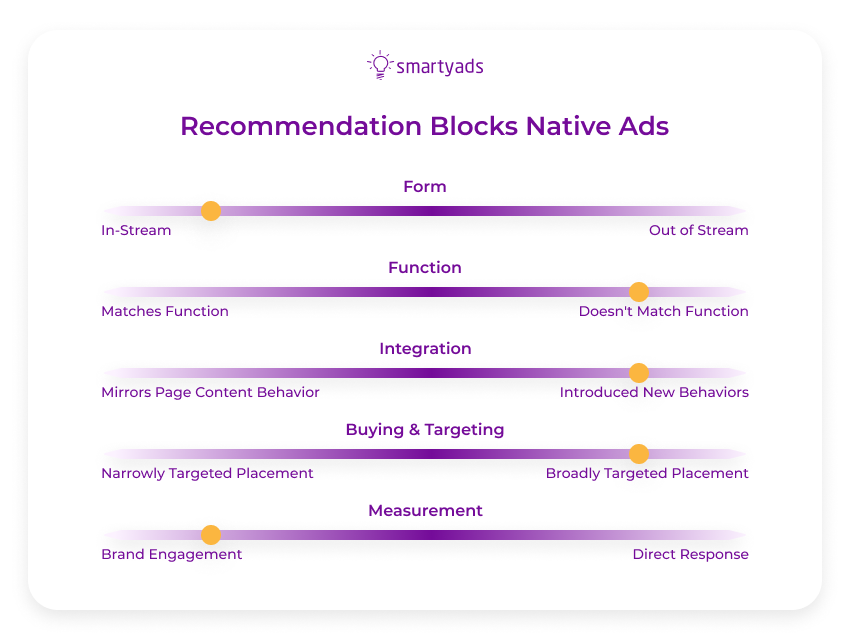
These suggestions, in the majority of cases, are recommended ad units that redirect users to the other sources where promoted materials are placed. Still, ad recommendation blocks are often ranked among actual publishers' content to ensure a good quality user experience.
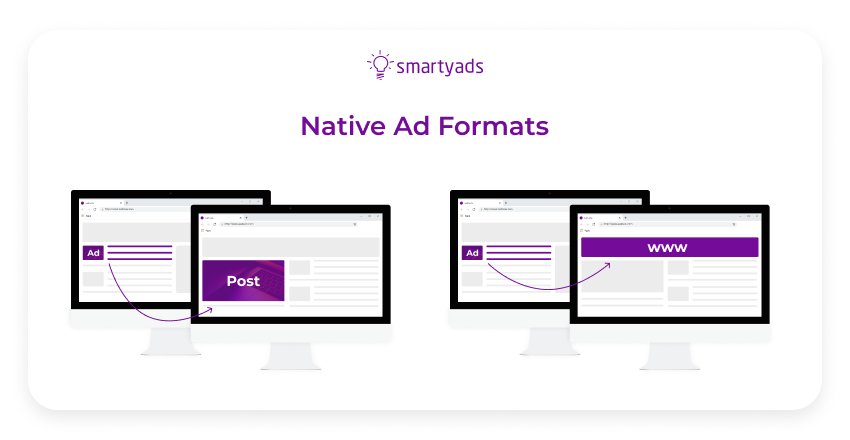
Located at the bottom of articles like photos, or videos that match the subject, these ads can be personalized and served according to the interests of each particular user.
The programmatic native advertising examples below exemplify how these widgets can be successfully implemented, e.g., on entertainment niche websites. Since programmatic advertising also targets the ad message according to the user data, it becomes possible to target only specific users and serve them relevant ads according to their characteristics (age, gender, geo, language, interests, etc.).
Moreover, ads placed in these widgets can be measured by the level of user engagement — views, number of shares, likes, and general on-page time.
In-feed Native Ads & In-feed Promoted Lists
Native campaign examples featured below can perform well in various ecosystems, including mobile and in-app. In-feed native advertisements are placed on the website's feed; they match the feed's appearance.
In-feed Ads
This type of native advertising should not be confused with in-feed social ads, as units are located directly on the website, not on social media.
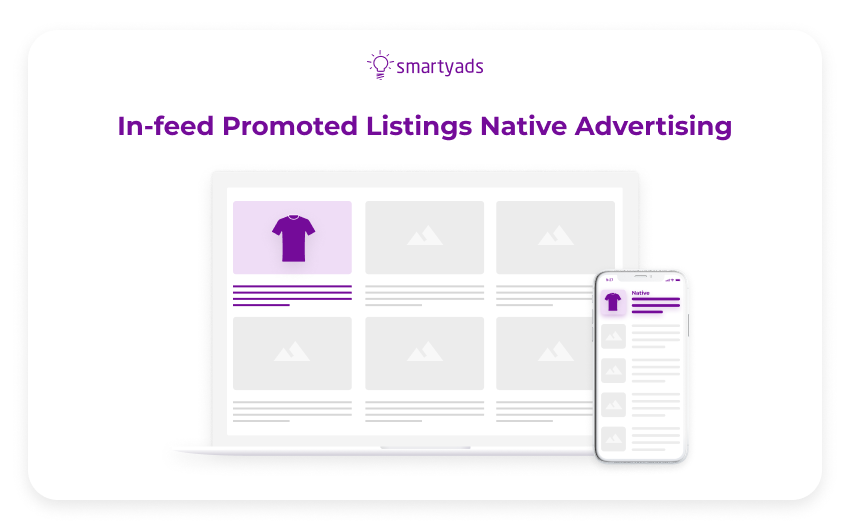
In-feed ads are created according to the advertiser's requirements to fit into the content harmoniously. In-feed native ad units are getting increasingly popular because their native content is usually placed in the vacant website's corner that doesn't merge with other kinds of ads — only side by side with editorial content.
This is how endemic in-feed ad works: it links to a page within site like any editorial story:
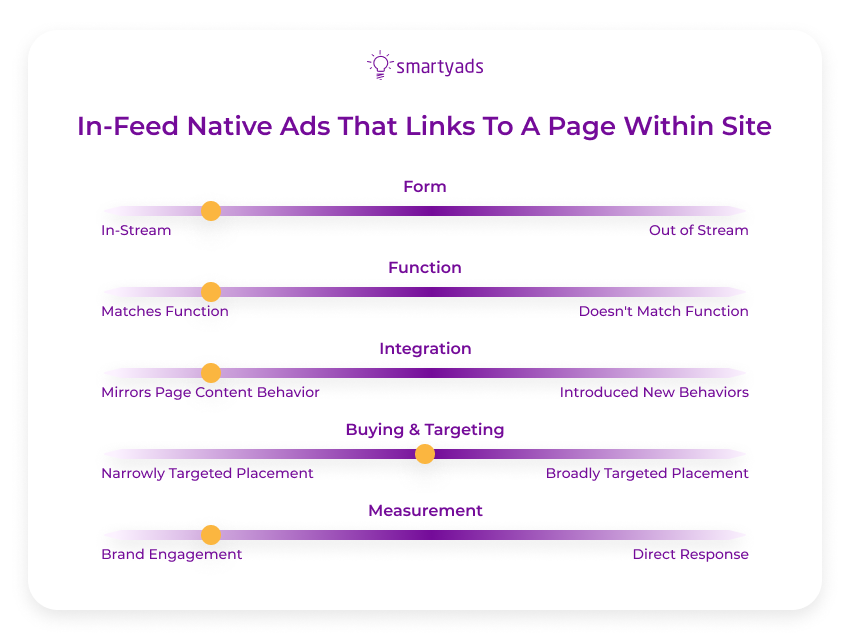
This is how a linked in-feed ad works: it links off of the publisher's site to the brand's landing page:
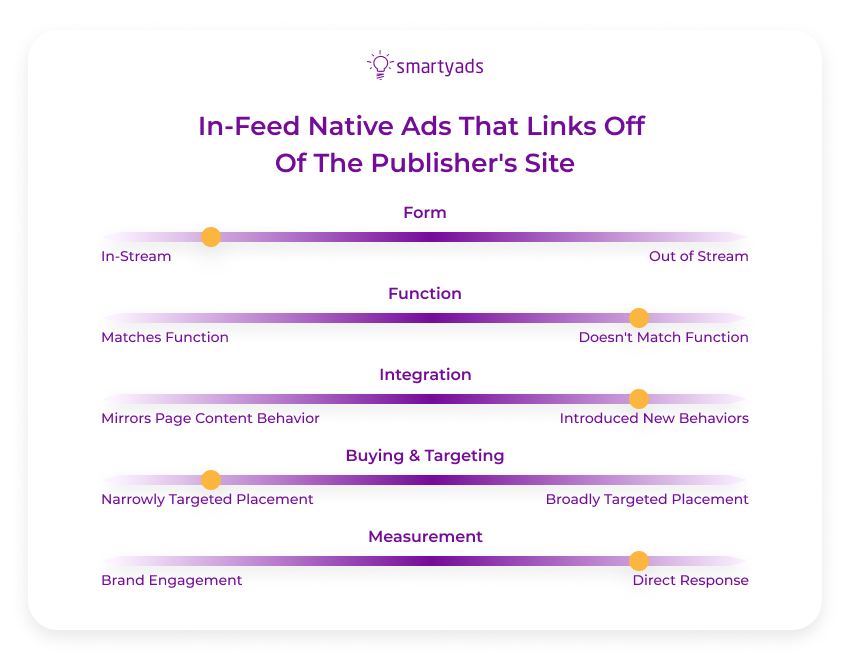
Promoted Listings
Promoted lists are often used on big e-commerce websites, e.g., eBay, to increase sales. Seeing a similar product alongside the selected one, the user will most likely click on the suggested item. Thus, more conversions and sales will be generated in the end.
How it works:
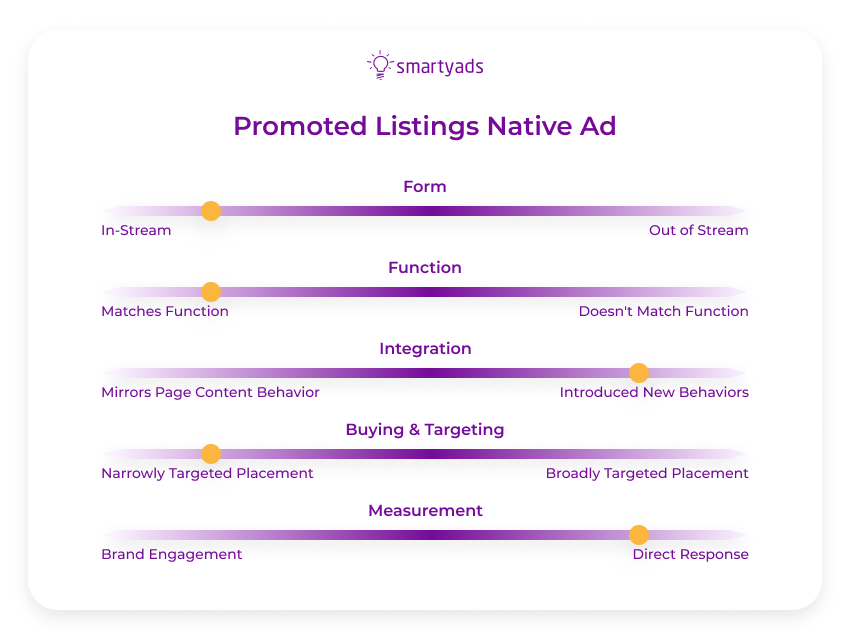
When implemented correctly, in-feed paid ads and in-feed promoted lists can demonstrate much higher CTRs than banner ads. This native programmatic advertising example below features targeted on mobile and desktop.
In-Feed Social Native Ads
What is an in-feed social native ad? Such a paid ad can be located on any social media platform, e.g., Facebook, Twitter, or Instagram. It appears in the form of a post typically placed in a specific community, as this way, the ad looks more natural.
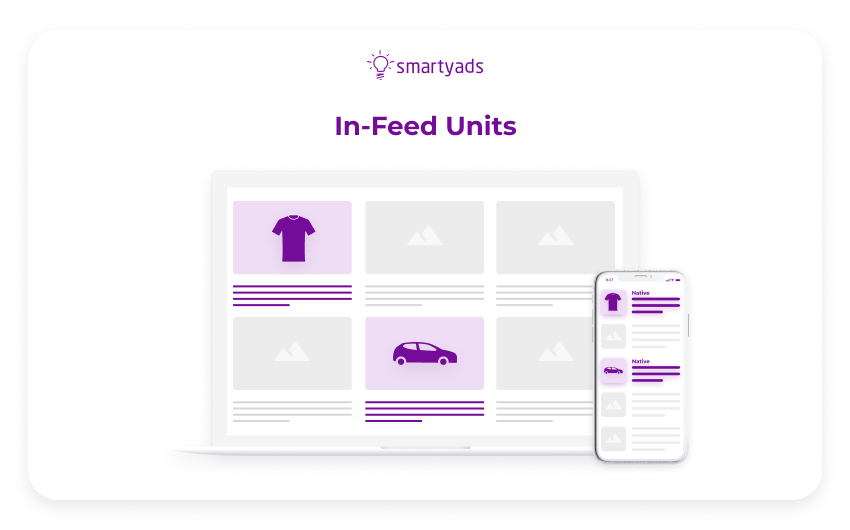
To make product placement successful, the advertiser should not only pick the right community but also assess the target audiences of it, user activity, habits, and posts according to the analyzed behavioral patterns.
In-feed social video ads can become infectious and help advertisers achieve incredible brand awareness quickly, especially if the product is creative or unique and is distributed through video formats.
Sponsored or Branded Content
Sponsored content is the product of an agreement between the publisher and advertiser about generating and posting a certain number of articles during the period. The publisher promotes the advertiser's brand by creating the branded content and receiving remuneration for this. In certain cases, advertisers create content independently without relying on the publisher.
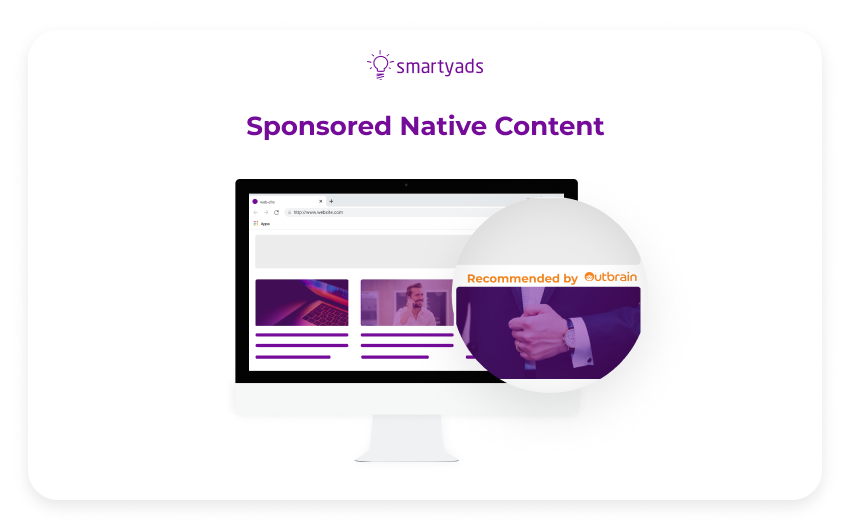
Some advertisers believe that sponsored stories are the ad type that corresponds to the native advertising definition as it helps achieve the most natural, non-sales feel.
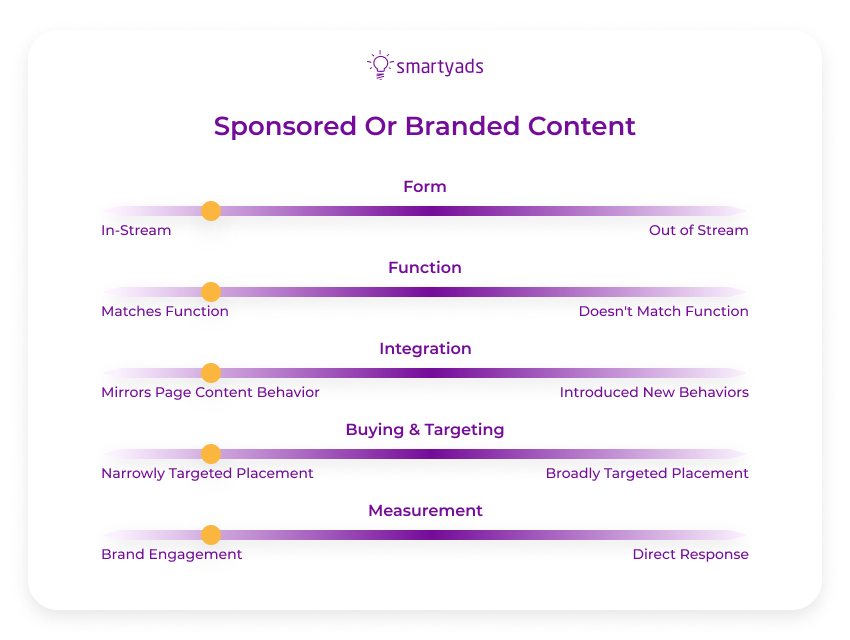
Examples of sponsored content can be easily spotted in The New York Times, The Atlantic, The Telegraph, The Independent, BuzzFeed, and other web sources.
It's hard to ignore the native advertising benefits that paid posts bring. The top-quality material usually fully corresponds to the target audience it was intended to be shared with, as well it perfectly matches the style of the web page.
It’s worth mentioning that sponsored post is not limited to articles; they may involve videos, infographics, and games. For instance, Buzzfeed turned sponsored videos into a real trend. For instance, the video they made for General Electric gathered over 12 billion views a couple of years ago.
Native Ads in Search Engine
Below, you can see native advertising examples in search results. When the user queries, these advertising snippets appear in search engines like Google or Bing.
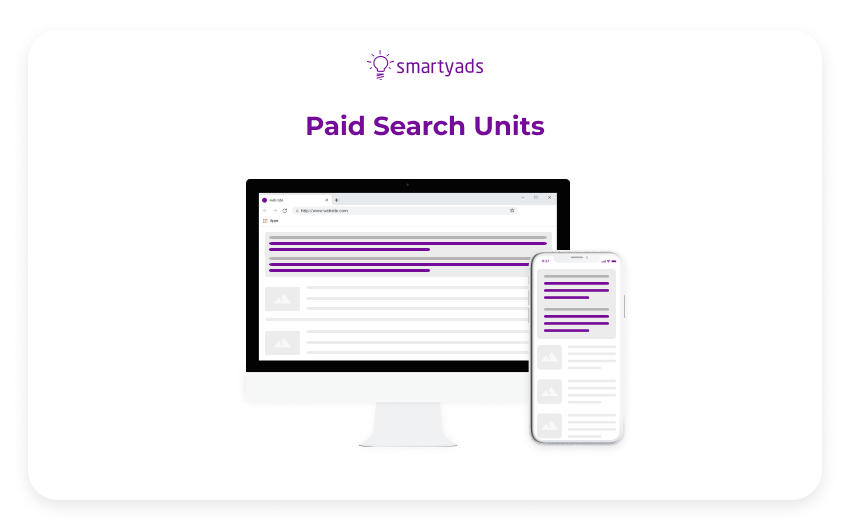
These native ads are located at the top of the search results page and visually resemble organic search results. Thus, advertising pages located in the search results are considered to be native because they replicate the look of the page along with the function.
Native ads in search engines meet the brand's objectives:
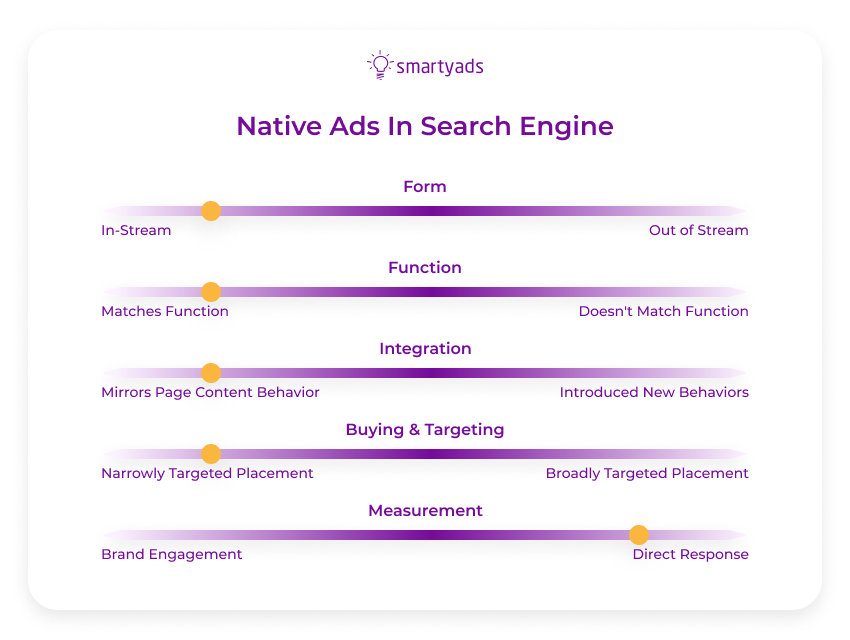
One study has found that although the links of native ads in search engines are highlighted in different colors and have captions, 40% of users fail to understand that these are ads.
But native advertising examples in search engines should always have tags notifying the users about commercial content.
These ads will work great for those advertisers that implement location-based content marketing campaigns and strive to hit users at the very moment when they search for products and services.
Programmatic Placement: The Power Of Personalization
Native advertising and programmatic can work very effectively together. Such a strategy combines the advantages of both advertising approaches. The advertiser gets the opportunity to show ads organically fitted into the site.
Native ads will be shown only to users whose characteristics are most suitable for serving impressions: geo, gender, age, interests, and other criteria.
Still, even though each impression will be tailored to the particular user, the purchase of native advertisement placement will be automated, and the campaign itself will be optimized in real time.
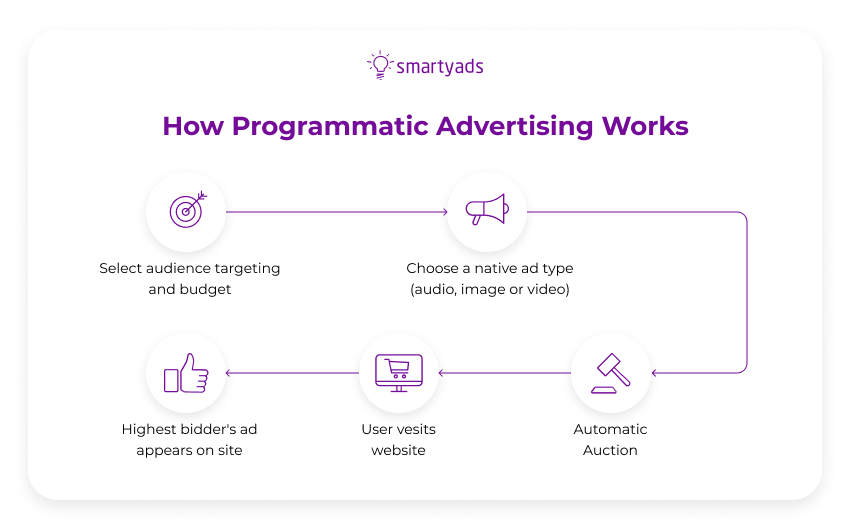
It seems complex, but here's how native advertising works if implemented programmatically: the advertisers can access a great variety of publishers registering at the demand-side platform (DSP) that interacts with the supply-side platform (SSP represents publishers) and various native ad networks.
DSP automates the process of ad buying in a matter of seconds and performs purchasing on behalf of the media buyer. The benefits of native advertising purchasing through automated platforms are apparent, apart from predefining how future placement should look.
DSP platforms like SmartyAds enable advertisers to target specific websites with audiences most valuable for the advertiser.
There's a way to define native advertising’s effectiveness to ensure that this or that native ad type goes along with your content marketing campaign.
On DSP, you can easily track how eCPMs change during the selected timeline and track impressions, conversions, daily/monthly spending, and other performance indicators.
To Sum Up
Looking at any native advertising example featured above, you can realize one underlying pattern.
Using programmatic advertising platforms like DSP, advertisers can launch and serve native campaigns on myriads of websites across the world.
Publishers, in their turn, can neatly and naturally embed such units into content using SSP and monetize their inventory without the risk of annoying loyal readers.
